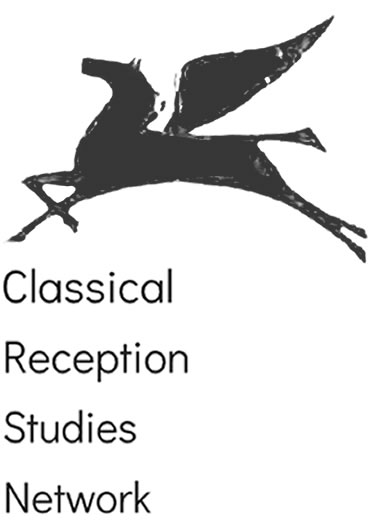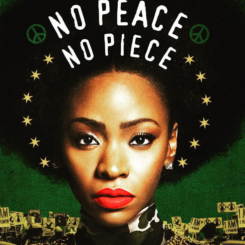Like the iconic song solicited for it, Spike Lee’s film Do The Right Thing (1989)(hereafter, DRT), highlights the competing voices and values underlying the banal term ‘community’. Using a heat-wave as metaphor, it follows the increasingly tense relationships between individuals on a Brooklyn block. Tensions erupt, NYPD officers kill a young black male, and Sal’s Famous Pizza burns to the ground.
DRT illuminates how individual, heated exchanges are merely the peak of a massive subterranean mountain. Its plot covers 24 hours, the setting less than a square mile. But, direct address and Lee’s ‘signature shot’, for example, interrupt realism with surrealism. These techniques and others make it difficult to abstract generalized truth, whether about a racialized Other or about a sibling, from one perspective and, as a result, moral imperatives: how does one do the right thing and to whom is that owed?
The film garnered both acclaim and criticism as fundamentally neoliberal fare. That an African-American man directed, wrote, produced and acted in a film populated by mostly non-white actors deepens the film’s significance in an industry that rarely uses people of color to drive plot. Yet, as bell hooks explained, Lee avoids tackling race as a gendered phenomenon. Moreover, because the film focuses on spectacular violence, brazen utterance, and interpersonal conflict, entrenched structural racism remains untouched. In other words, Lee doesn’t go particularly far down the mountain once he uncovers it exists.
 Lee’s challenging 2015 film Chi-Raq rehashes DRT on many fronts.[1] Drawing on Aristophanes’ Lysistrata and its perceived contemporary legacy, Chi-raq portrays a neighborhood negotiating America’s gun violence epidemic. Following a Black child’s murder, gang-affiliated women ‘sex-strike’ for peace. This time Chicago provides the setting, not Lee’s native Brooklyn, and Kevin Wilmott adapts the ancient Greek comedy alongside Lee. They versify most of the dialogue and inject humor into their adamantly labeled satire (instead of, as some deem appropriate, tragedy).
Lee’s challenging 2015 film Chi-Raq rehashes DRT on many fronts.[1] Drawing on Aristophanes’ Lysistrata and its perceived contemporary legacy, Chi-raq portrays a neighborhood negotiating America’s gun violence epidemic. Following a Black child’s murder, gang-affiliated women ‘sex-strike’ for peace. This time Chicago provides the setting, not Lee’s native Brooklyn, and Kevin Wilmott adapts the ancient Greek comedy alongside Lee. They versify most of the dialogue and inject humor into their adamantly labeled satire (instead of, as some deem appropriate, tragedy).
This is no simple movie. The Lysistratan apparatus coexists with iconic American ‘texts’ (e.g. Dr. Strangelove, West Side Story, and Gone with the Wind), African-American performance genres (e.g. step, rap, Blaxploitation), and contemporary politics. Both men talk excitedly about revising it, but Lee repeatedly emphasizes that adapting Lysistrata forthe screen was Wilmott’s decade-long dream. Once they set it in Chicago and in light of events like the murders of Rekia Boyd,(d. 2012, 22 years old) and Laquan Macdonald (d. 2014, 17) by Chicago Police officers, they excised portions to include the perspectives of Chicagoans affected by gun violence.
I consider Lee and Wilmott’s inclusivity in light of reviews by film critics and the students with whom I re-watched the film. Many of my students view Lee as a non-resident attempting to capitalize on and to condemn their hometown. And while reviewers marvel at this bricolage incorporating Ancient Greek material, with all its classicizing sheen, my students also question the material’s suitability. Their critiques make me wonder about Chi-raq’s ideal imagined audience: is this for neoliberals who believe love will solve the ridiculous construct of ‘black-on-black violence’, as the narrator (Samuel L. Jackson) moralizes at its end? Does the gesture towards systemic change in mental health services and employment opportunities ring true when so much of problems this movie dramatizes arises from the community itself? Do Lee and Wilmott combat hackneyed representations of gender and Black sexuality or merely rely on tropes that undercut the superficial message of ‘empowerment’?
These criticism don’t even begin to address the problematic equation of female activism with sex strikes, including the film’s familiarly reductive take on Leymah Gbowee, its assumption that gang activity and warfare are solely male enterprises, or, less seriously, some of the horribly forced rhyming on display. But with so much movie and so little space, I cannot respond fully here. Nevertheless, I wanted to think about how Lee’s film and Aristophanes’ play can be constructively brought to bear on one another, rather than rely on Greek drama to ‘dignify’ African-American experience or, equally untenable, depend on African-American labor to help our field meet academe’s demands (i.e. relevance). So, I offer one cluster of thoughts about Chi-raq in regards to the adaptation’s timeliness.
What does Lee imagine to be the right thing for viewers to do about gun violence and its connection to warfare? Aristophanes’ titular character aims only to end war between Greek-speaking peoples. She mentions there are plenty of barbaroi to fight (Lys. 1133-35), hinting at the Persians who stand to gain from their strife, and her allied women miss the luxuries afforded by successful war efforts. Lee and Wilmott constantly refer to gun violence as a national problem. They choose the controversial moniker Chiraq to compare Chicago to a country to America’s east. At minute 3, an infographic lists American deaths in Afghanistan and Iraq as a result of America’s Global War on Terror and those who died in Chicago during the same period. The latter figure surpasses the others combined. After a montage showing women leading sex-strikes across the globe at minute 95, the police commissioner claims the women want world peace. The peace treaty that concludes the film never mentions these geopolitics, however.
By orienting his multivalent project around a male protagonist once more (it’s not called Lysistrata), Lee places his audience back on the mountaintop with nowhere to go. But the personal despair of DRT becomes Chi-raq‘s clumsy optimism. What are the reciprocal claims made by person, neighborhood, city, nation, and empire? Are we to believe that the change of heart that moves Chiraq, the character, to renounce his previous life can lead to world peace? Or would such a change of heart have lowered the number of domestic deaths to the acceptable amount/location of American fatalities? Can’t the Global War on Terror also be understood as a war between people with a long relationship of reciprocal favors, as Lysistrata describes the Greek-speaking communities? How would such an understanding change the moral parameters Lee and Wilmott assume and gender’s relationship to them? Or race and gender’s relationship to citizenship?
Suffice it to say, these questions don’t have easy answers not could one film could answer them definitively. Luckily, African-American filmmakers are currently enjoying more widespread support from audiences, critics, and studios alike. Lee’s Chiraq might not be the only screen adaptation of Aristophanic comedy set in a Black community for too long and those inextricably related issues of race, ethnicity, gender, and imperialism can be addressed from a different viewpoint. Here’s to hoping for some better rappers next time too.
[1] Angela Bassett, playing Miss Helen, recalls DRT explicitly at 22’.
Sasha-Mae Eccleston is an Assistant Professor Classics and a member of the Program in Gender and Women’s Studies at Pomona College. Her research encompasses Apuleius, Classical reception, and the interrelatedness of narrative form and moral philosophy. A cinephile, she wholeheartedly recommends viewing Moonlight this holiday season and welcomes correspondence of any kind (SashaMae@pomona.edu).


